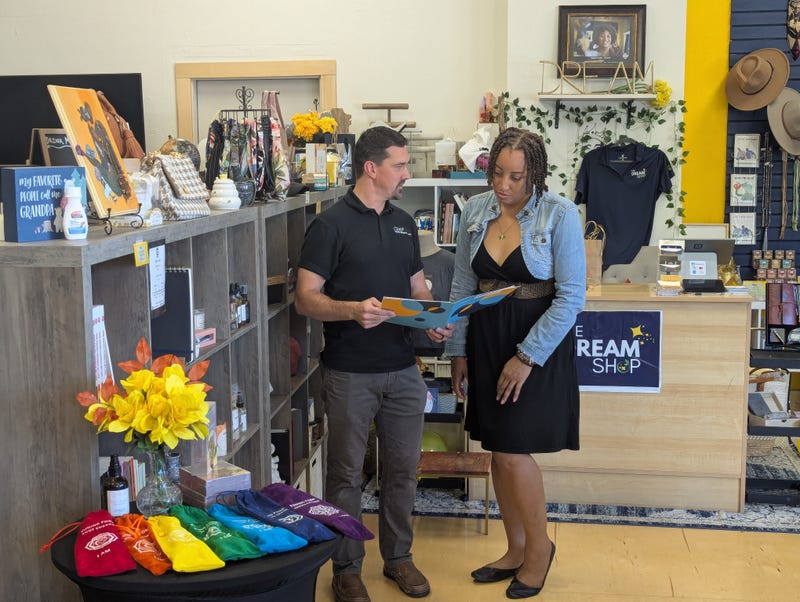
As the owner of The Dream Shop, a gift retailer in Minneapolis, Markella Smith says she’s keeping an eye on the bottom line.
“It’s hard owning a business right now, and to save money wherever is the goal,” said Smith. “People’s expenses have gone up, and their disposable income is less, and we don’t carry necessities; we carry gifts.”
A gift is how Smith would characterize the recent guests who came into her shop from the Center for Energy and Environment (CEE), a non-profit that provides practical energy solutions for a variety of customers from homes to high rises, and particularly Minnesotans like Smith.
“We serve small businesses that don’t have the time or staff to put a lot of effort into energy efficiency upgrades,” said Laura Bebo-Ekanayake, commercial marketing manager for the Center for Energy and Environment. “They may not have the time to figure out what type of lighting to pick, or our HVAC and refrigeration specialists can provide a free assessment to help them upgrade to the best possible equipment, get the highest rebate possible, and find high-quality contractors.”
Smith’s energy audit provided great insight into ways she was maximizing her energy use and areas where she could tap into the knowledge of CEE. According to Mark Rader, light consultant for CEE, Smith was using energy-efficient, LED bulbs to light up her shop. Rader said this isn’t typical. “Often, business owners don't know where to start, or maybe they've thought about making upgrades but aren't aware of economically viable ways to get there. Sometimes they've already purchased equipment that's eligible for rebates, but they don't know how to navigate the rebate process.”
Rader also agreed with Smith’s decision, after consulting with local police, to leave a light on at the shop all night. Rader told her the total cost to do so was $18 per year, well worth it for safety and security concerns.
The light bulb moment for Smith came when she spoke with the HVAC consultant for CEE. “He gave me tips to help when it’s really hot, things I can do to cool down the space quicker.” Smith learned her space cools down about one degree per hour. She had been turning the air conditioning on and setting it to 65 degrees when she arrived at the shop at 1 p.m., forcing the HVAC system to work harder to cool down and not allowing enough time. Smith learned that turning her air conditioning on at 10 a.m., three hours earlier and gradually cooling down the space, would be more efficient and effective.
The HVAC specialist also took Smith outside to her AC unit and showed her how to clean the filters and to make sure the area that blows air is clear of debris. “It was so helpful that he took the time to show me where everything was and how to clean and maintain it,” Smith explained.
Should Smith’s air conditioning unit need to be replaced, she got tips there, too. “If I needed a bigger AC, a grant could help toward the cost of that, versus me feeling stressed over the cost.”
CEE offers case studies on its website that detail businesses saving thousands after completing an energy audit. One such example is Arc’s Value Village, which upgraded to LED lighting at its three Twin Cities locations, resulting in a $32,000 utility rebate and annual savings totaling more than $22,000.
The insight and services from CEE are completely free. “We’re not trying to sell or push anything on business owners,” said Bebo-Ekanayake. “We just want them to know about technology or policy changes and that there are resources to help them reduce operating and energy costs.”
Learn more about the Center for Energy and Environment (CEE) here.
